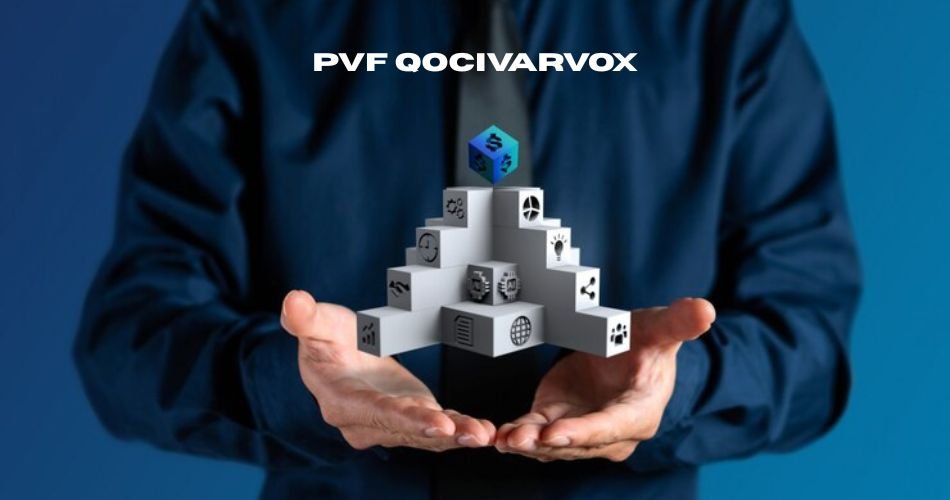The term pvf qocivarvox may sound like a cryptic code or a futuristic idea, but its mystery is exactly what makes it intriguing. As tech evolves and new frameworks emerge every year, phrases like pvf qocivarvox start to appear across forums, speculative blogs, and whispered discussions in underground dev communities. Some consider it to be a metaphor for a new way of thinking in technology, while others suggest it could be a code name for a prototype system currently under development. Regardless of its origin, pvf qocivarvox is rapidly gaining traction as a concept that blends theoretical innovation with futuristic application. It serves as a mental model, perhaps even a placeholder, for ideas that push beyond current limitations in code architecture, AI synergy, and platform independence.
The Hypothetical Origins of PVF Qocivarvox
When breaking down the term pvf qocivarvox, we’re looking at what may be an acronym fused with a constructed language. While “PVF” could refer to anything from “Programmable Virtual Framework” to “Private Verification Format,” the word “qocivarvox” has a Latin-style rhythm that suggests complexity and intelligence. Online speculators have connected it to encrypted AI projects, experimental programming environments, and next-gen data infrastructures. If pvf qocivarvox is more than just a term, then it may represent a clandestine effort to shift from centralized to autonomous programming logic—something that could forever alter how machines interpret and execute human-written code.
Why PVF Qocivarvox Appeals to Developers
In today’s programming culture, where trends fade faster than they rise, the allure of something unknown like pvf qocivarvox fuels intense curiosity. Developers are always hunting for tools and frameworks that will simplify their workload, improve runtime efficiency, or allow greater flexibility across devices. The idea that pvf qocivarvox could introduce an entirely new syntax, or maybe a logic structure optimized for AI assistance, is enough to drive countless developers down the rabbit hole. It’s not just about the code—it’s about what that code could mean in a world where automation, decentralization, and hyper-connectivity dominate every sector.
PVF Qocivarvox as a Digital Framework
Suppose for a moment that pvf qocivarvox is a digital platform or software framework. What might it do? Early chatter suggests it might be a fusion of container technology, machine learning engines, and modular APIs. This would mean that pvf qocivarvox is more than just a language or tool—it’s an environment. An ecosystem where developers can deploy, modify, and scale applications without worrying about platform restrictions. It’s the kind of thing modern businesses dream of—flexibility, control, and simplicity wrapped into a secure architecture. If such a system truly exists under the label pvf qocivarvox, it could challenge conventional giants like Kubernetes, Node.js, or even Rust.
How PVF Qocivarvox Could Influence AI Development
One of the more fascinating rumors around pvf qocivarvox is its potential connection to artificial intelligence. Developers claim that it may include self-learning algorithms embedded at the system level, allowing code to re-optimize itself based on real-time usage. Imagine writing a function that updates itself, removes redundancies, or adapts its logic depending on user interaction—all without human input. That’s the dream behind AI-enhanced systems, and pvf qocivarvox could be a step in that direction. If AI is truly integrated into its core, then pvf qocivarvox is not just about software; it’s about building software that evolves.
Challenges Associated with PVF Qocivarvox
Despite the excitement, working with pvf qocivarvox, assuming it exists, isn’t without hurdles. One of the biggest challenges is its obscurity—there’s no central documentation, no training courses, and only minimal references online. That means any developer trying to implement pvf qocivarvox must rely on intuition, reverse engineering, or scattered community hints. This difficulty is compounded by potential compatibility issues with legacy systems, as pvf qocivarvox may operate on principles that are too modern for integration with outdated software. The steep learning curve is both a challenge and a barrier to mass adoption.
The Community Around PVF Qocivarvox
As with any revolutionary idea, pvf qocivarvox has begun to build a community, albeit in small and hidden corners of the internet. Some niche Discord channels are dedicated to dissecting code snippets thought to be written in the qocivarvox language. Others have tried to document patterns, syntax, or behaviors that may define this mysterious framework. Though not mainstream, the existence of a passionate group discussing pvf qocivarvox speaks to its potential. Community is often the backbone of any successful technology, and even in its theoretical state, pvf qocivarvox seems to be generating a tribe of thinkers, tinkerers, and trailblazers.
Practical Applications of PVF Qocivarvox
Let’s say you’re a startup founder or CTO looking to revolutionize your infrastructure. If pvf qocivarvox is real and capable of modular deployment, AI-driven adaptation, and zero-downtime scaling, then it’s exactly what you’d want in your tech stack. Financial platforms could use it for real-time fraud detection; hospitals might use it to automate patient data systems; content platforms could use it for personalized UX powered by algorithmic self-adjustment. The versatility that pvf qocivarvox hints at makes it ideal for a broad range of industries—especially those craving efficiency and autonomy.
Security Aspects of PVF Qocivarvox
In a time where data breaches are daily headlines, security is a non-negotiable component of any digital framework. Discussions around pvf qocivarvox include talk of quantum encryption, decentralized identity verification, and AI-based anomaly detection. If true, these features would make pvf qocivarvox one of the most secure frameworks ever conceptualized. It would allow companies to handle sensitive information without fear of external intrusion, thanks to built-in, automated security protocols that evolve in real-time—like a digital immune system.
Comparing PVF Qocivarvox to Existing Tech
When you compare pvf qocivarvox to existing systems like Docker, Terraform, or even blockchain-based applications, what stands out is its supposed all-in-one nature. Most current tools focus on a single element—either deployment, security, or computation. PVF Qocivarvox, on the other hand, is rumored to do it all. It’s modular, flexible, secure, scalable, and intelligent. Whether it outpaces existing frameworks depends on how much of the speculation is true, but even the concept alone challenges our current tech paradigms.
The Ethical Side of PVF Qocivarvox
With great power comes great responsibility—and pvf qocivarvox is no exception. If it includes AI-enhanced systems capable of evolving, who controls it? Who ensures transparency in its learning behavior? These are not just academic questions but real concerns if pvf qocivarvox becomes mainstream. The possibility of misuse, surveillance, or biased evolution must be addressed before any broad adoption can be trusted. That means ethics must be built into the core, not added as an afterthought.
The Future of PVF Qocivarvox
Looking ahead, pvf qocivarvox could be one of the most disruptive innovations in decades—if it’s developed properly and gains enough traction. It represents a shift away from rigid, top-down programming toward a more fluid, organic development style where systems adapt instead of break. Even if pvf qocivarvox remains a theoretical construct, the idea itself is sparking a new wave of tech creativity. Developers, entrepreneurs, and futurists alike are watching closely, waiting for the moment when myth becomes reality.
Conclusion
In the ever-changing world of technology, pvf qocivarvox is more than just a curious keyword—it’s a symbol of what could be. Whether it’s real, under development, or merely a fictional framework designed to inspire, pvf qocivarvox forces us to rethink how we design, deploy, and interact with software. It combines the best of AI, security, scalability, and community-driven evolution, making it a concept worth exploring, discussing, and perhaps one day, building. For those willing to explore the unknown and challenge the limits of what’s currently possible, pvf qocivarvox may be the spark that ignites the next technological revolution.






